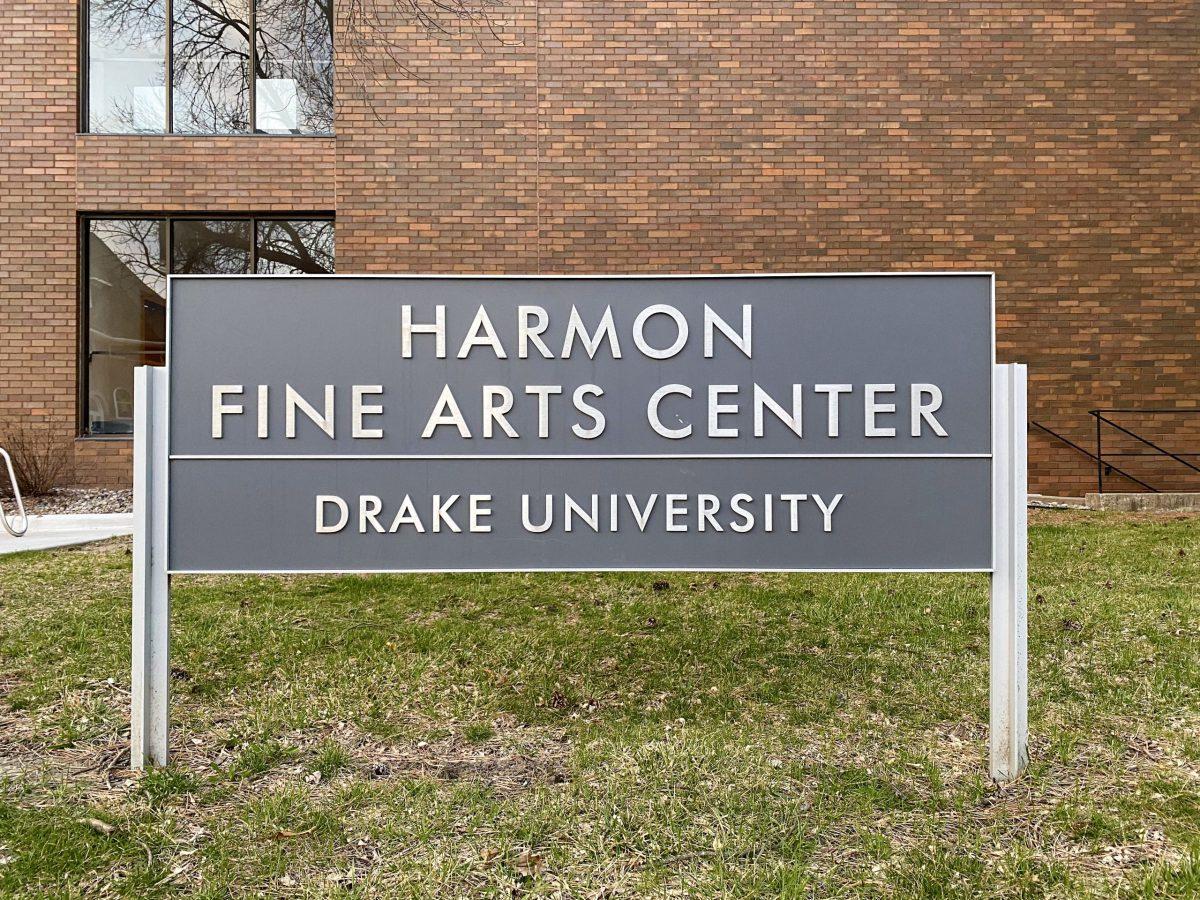Lights up on an empty theater. Four cameras focus on a woman standing center stage. She wears a plain brown dress and a white singer’s mask, a la a duck’s bill. The music begins, and she utters the first words of the show, only slightly muffled by her mask: “I wish.”
In early April, the cast of Drake University’s “Into the Woods” got their wish: giving the Drake community a show about connection, making mistakes and being human.
Their greatest obstacle was a familiar one: COVID regulations. Students had to social distance on stage, wear masks and sanitize props. They also had an entire understudy cast at the ready in case of COVID exposure.
Director Erin Horst had to find ways to keep her cast safe while putting on a good performance.
“If there’s anybody that’s gonna get creative about a pandemic, it’s theater,” Horst said.
Creating intimacy and emotional connections from six feet apart was their biggest struggle.
“It’s incredibly difficult for me as a director to watch,” Horst said. “Multiple times they said, ‘Erin I can’t make this connection, I just really want to reach out and touch this person.’”
Mia Alaimo, who understudies the Baker’s Wife, has found the distance challenging.
“When I act with other people, it’s very hard for me not to have the impulse to touch the other person,” Alaimo said. “Your spatial awareness on stage is different because you’re not actively thinking about that, you’re actively thinking about what’s next in the scene.”
The cast needed to find replacements for that physical touch.
During the first act, the characters are searching for “the cow as white as milk, the cape as red as blood, the slipper as pure as gold and the hair as yellow as corn.” The actors connected through these props.
“We’ll play with the hair because it’s long, so we can be at two different ends and pretend that’s our hand holding,” said Shane Scandurra, who plays the Baker.
The props physically connect them, but the actors still need to convey those emotions with only half their face.
“A lot of times when we’re handing off objects, that can show a sort of care, especially the baby,” Scandurra said. “You have to really show love through your eyes and through your body.”
When there isn’t a prop to connect the actors, Horst put her choreography background to work.
“I am a huge believer in movement, so in places where I feel there should be touching or there should be action, we’ve put movement,” Horst said.
A scene that was originally an intimate, physical moment between the Baker’s Wife and the Prince became a game of cat and mouse as he pursued her across the stage.
Horst also neededs to deal with the four cameras live streaminglivestreaming the performance. Theater is rarely filmed, and so that addition adds a new, alien component to an already difficult situation.
“My brain is on overdrive, thinking about which cameras are taking which shots and if that’s interesting or not, because acting to a camera is very different than to a live audience,” Horst said. “It changes the energy of the whole thing.”
She found a way to use the cameras to overcome the awkward separation of social distancing, like when Cinderella is doing her stepsister’s hair and gets slapped.
“We’ve played with the camera angle,” Horst said. “We positioned her far enough behind that you can’t really see that they’re not right next to each other, and so they’re doing parallel movements together.”
Despite these adaptations, Horst had difficulty helping the audience connect with the most intimate moments of the show.
“There are four characters singing this ballad, and they’re each comforting another character, and they literally can’t touch each other,” Horst said. “As an audience member, it’s hard to watch because we already feel so disconnected in our real life from people around us.”
Watching these characters overcome that distance and work together, audiences draw connections between the show and their own lives.
“They don’t actually find any success or happiness until they start working together,” Horst said.
Scandurra’s character, the Baker, must learn the same lessons as the audience.
“At the end of the day, if we don’t show kindness and we don’t understand the other side, then we can’t move forward as a community,” Scandurra said.
Due to COVID regulations and licensing issues, “Into the Woods” and the upcoming musical “Spunk” (Apr. 29-May 2) are only available to student audiences. However, supporting musical theater goes beyond Drake.
Horst puts it best: “If you want to support theater, keep going to theater.”








A • May 7, 2021 at 6:58 am
Brave of them to consider continuing on despite the pandemic. Good that Into the Woods will be known as the luck that acting is not through despite rough times.